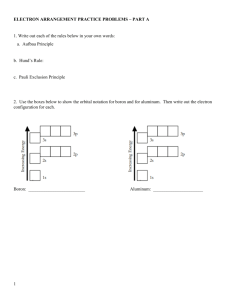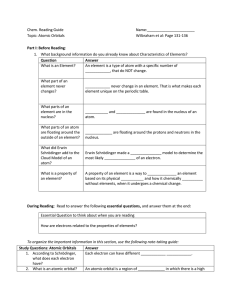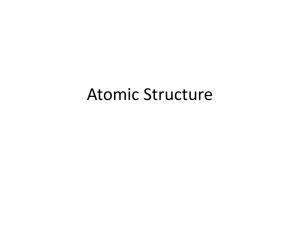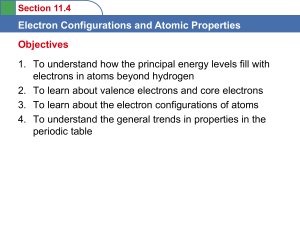Electron Configuration
advertisement
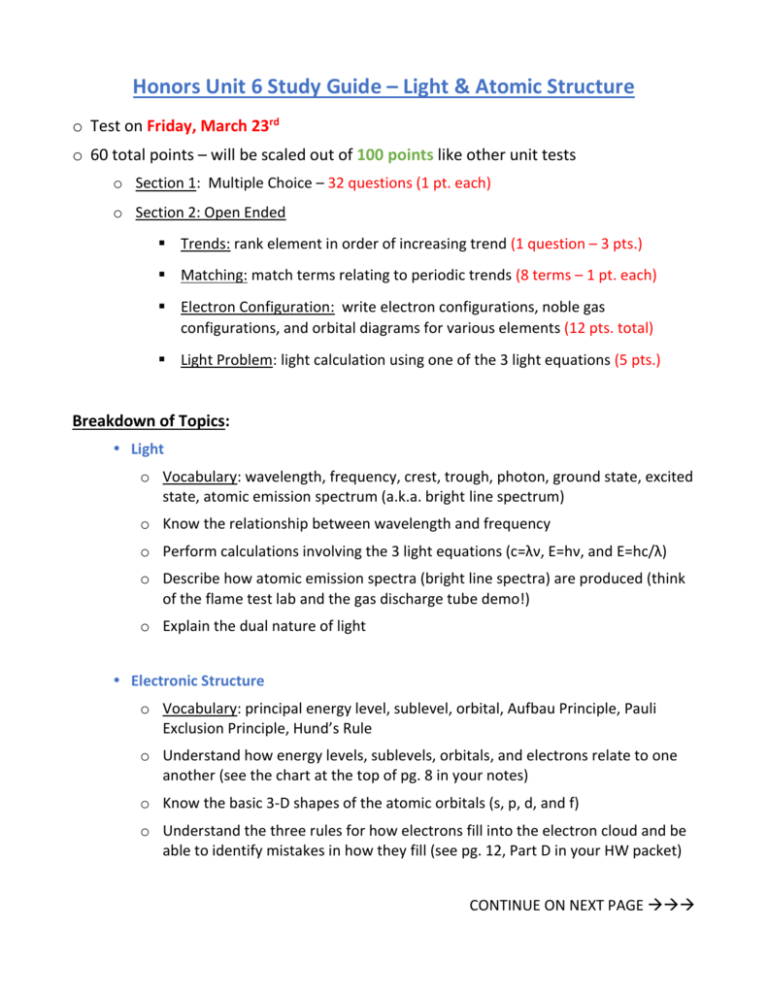
Honors Unit 6 Study Guide – Light & Atomic Structure o Test on Friday, March 23rd o 60 total points – will be scaled out of 100 points like other unit tests o Section 1: Multiple Choice – 32 questions (1 pt. each) o Section 2: Open Ended Trends: rank element in order of increasing trend (1 question – 3 pts.) Matching: match terms relating to periodic trends (8 terms – 1 pt. each) Electron Configuration: write electron configurations, noble gas configurations, and orbital diagrams for various elements (12 pts. total) Light Problem: light calculation using one of the 3 light equations (5 pts.) Breakdown of Topics: Light o Vocabulary: wavelength, frequency, crest, trough, photon, ground state, excited state, atomic emission spectrum (a.k.a. bright line spectrum) o Know the relationship between wavelength and frequency o Perform calculations involving the 3 light equations (c=λν, E=hν, and E=hc/λ) o Describe how atomic emission spectra (bright line spectra) are produced (think of the flame test lab and the gas discharge tube demo!) o Explain the dual nature of light Electronic Structure o Vocabulary: principal energy level, sublevel, orbital, Aufbau Principle, Pauli Exclusion Principle, Hund’s Rule o Understand how energy levels, sublevels, orbitals, and electrons relate to one another (see the chart at the top of pg. 8 in your notes) o Know the basic 3-D shapes of the atomic orbitals (s, p, d, and f) o Understand the three rules for how electrons fill into the electron cloud and be able to identify mistakes in how they fill (see pg. 12, Part D in your HW packet) CONTINUE ON NEXT PAGE Electron Configuration o Write electron configurations using the full format, noble gas configuration, and orbital configuration (drawing an orbital diagram) o Identify an element based on its electron configuration o Identify mistakes in written electron configurations o Determine the number of valence electrons given either the element or the electron configuration o Understand the relationship between the electron configuration/orbital diagram for an atom vs. an ion Periodic Trends o Vocabulary: electronegativity, atomic radius, cation, anion, ionization energy, electron affinity o Know the direction for each of the six trends we discussed in class o Compare elements and decide which has the larger value for a given trend o Place various elements in order of increasing trend o Know the relationship between the size of a cation and the size of the atom from which it forms Same for the size of an anion vs. the size of the atom from which it forms To study most effectively, look over old homework assignments, your notes packet, warm-up problems from class, and any homework assignments we skipped over. Answer keys are posted online as is the Jeopardy review game. Good luck studying!!


